Online Customer Experience and Branding - an example of integrating the website and social presence
Today, with so many prospects and customers interacting with you online, I believe your brand really is greatly influenced by the Online Customer Experience you develop. But I think many don't see how a website can support and especially enhance their brand. In this posts I'll share an approach I use with businesses and I hope you can adapt this model for your own business or your clients - it's classic brand marketing.
Brand value mapping
The first stage is to understand where a brand is right now. I was recently discussing this approach with my class for marketing students in Derby. As a starting point we did a brand mapping activity for different companies. The areas highlighted in red are the key review areas for your online brand.
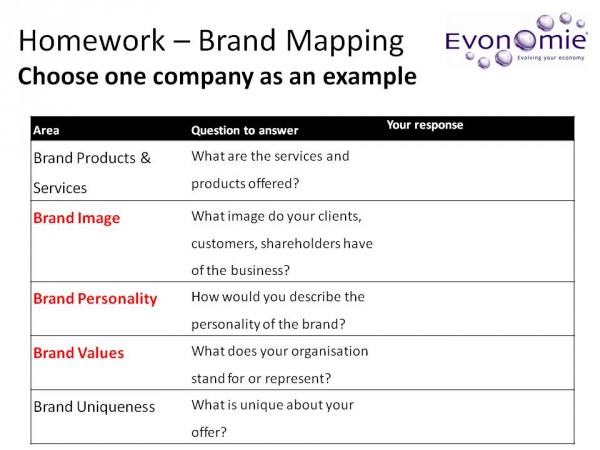
Understanding your audience
Once the brand has been mapped, it’s important to understand where your clients or customers come from. Basic questions to ask are "Does your business sell to other businesses"? "Do you sell to consumers"? "Or both"? Within each you can drill down further to consider different web personas. Depending on your target market, there are different social media tools you could adopt.
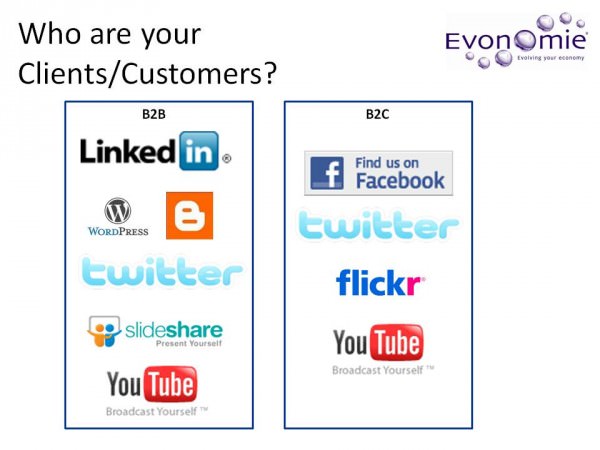
Selecting the right social tools for the audience
LinkedIn® is probably the most useful tool in a business to business environment. I personally feel that YouTube has fantastic potential for manufacturers, demonstrating how their products work, the care taken in manufacture and more. If you’re selling to consumers you need to use Facebook. If you don’t create your Facebook page, someone else may do it for you and in that situation you may have less control, incorrect brand messages may be promoted and your ‘fans’ could believe that you have supplied the information.
Some time ago I created the Social Media Balance Sheet™ which was a way to objectively measure how a company was using social media. This provided a clear snapshot of the approach, commitment and level of engagement within any company with an online presence. The critical issue with the Social Media Balance Sheet™ is that you don’t need access to a company’s analytics to answer the questions. This is useful when reviewing competitors who are unlikely to provide you with all the details needed.
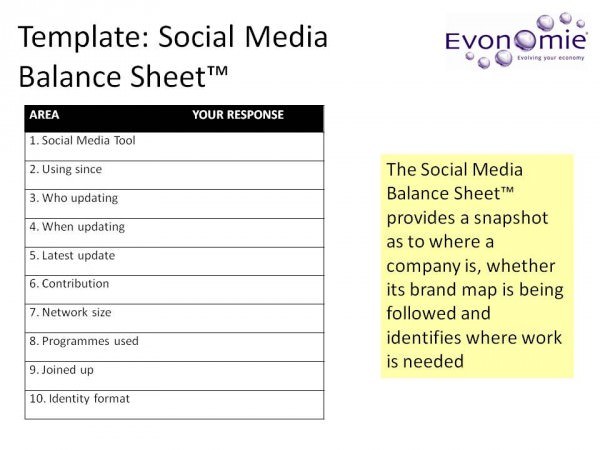
An example of how one brand presents itself online
Once the snapshot had been taken, we reviewed owned and earned media. The most obvious starting point for owned media is a company’s website. The AGA website is a good example. This website uses the 5S goals for digital marketing well. It owns the images and the overall look and feel. A strong brand, presented well.
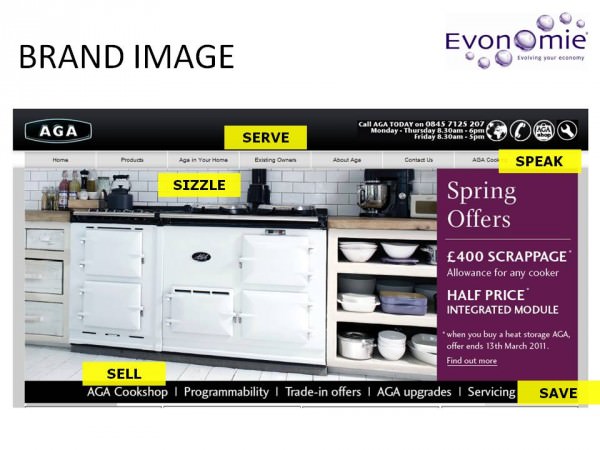
The challenge for well-known and established brands is now deciding how best to move into new spaces such as Facebook. The first challenge is searching for the name and it’s probably useful that you can’t see all the alternative names that appeared in Facebook when searching for ‘Aga’. It is safe to say that it did include ‘Agadir’ in Morocco. Other search results won’t be mentioned here!
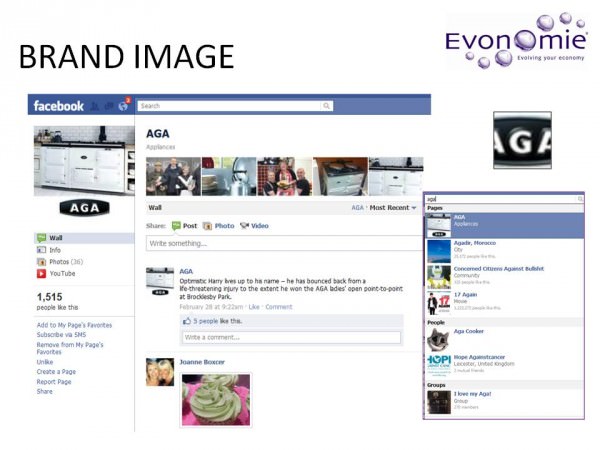
When AGA initially started using Facebook they didn’t realise that the only logo shape permitted was square and so their iconic logo was chopped off at the ends. Again, another place where a brand image could be unknowingly destroyed online.
Another challenge is that Facebook changed the way pages work a few weeks’ ago. In doing this, they now show the five most recent photos added to the site. This means brand managers need to constantly review images on their site. Or add their own new images on a regular basis.
Twitter is another social media space that is useful when selling to consumers. AGA clearly didn’t register their name with Twitter early enough, so have adapted the brand name to ‘Aga-Tweets’. Looking at their current followers – just 20 – this isn’t a tool they are using much for customer engagement.
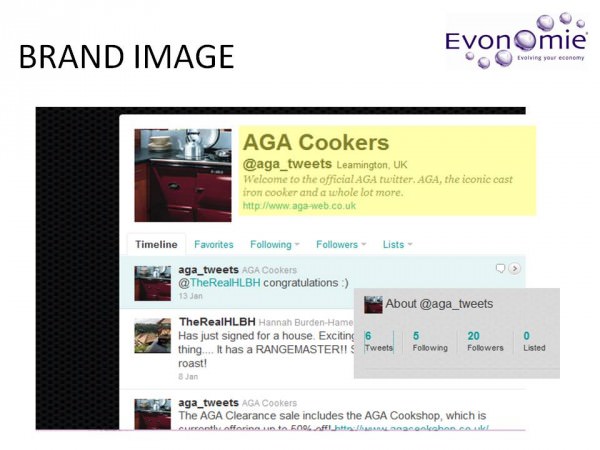
An example of where others will create content, if you don’t , is YouTube. Aga hold many demonstrations around the country which are often fully booked, yet none of these can be found on YouTube (perhaps they are so well hidden, I couldn’t see them). In the gap, a chef in the USA talks about his Aga. Again, incorrect brand messages and misinformation may be provided. If you don’t own your social media space, someone else will.
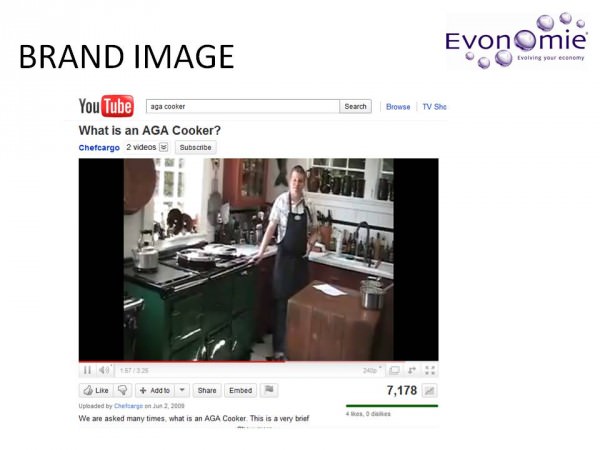
Moving to another high street name in the UK, a trendy furniture store, Habitat. Their owned media includes their own website which includes exclusives, ways to find nearest stores and other ways to help customers.
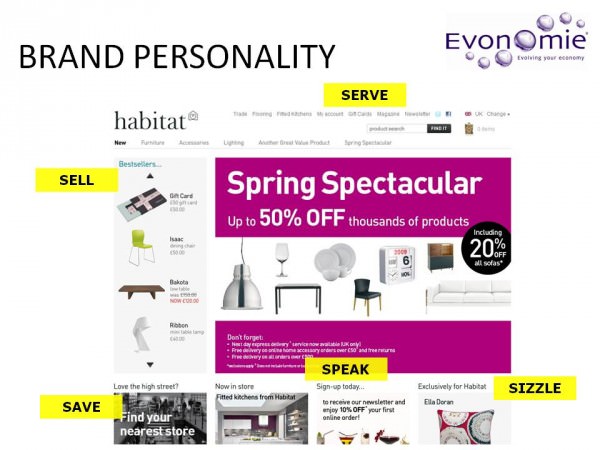
Sadly when Habitat adopted Twitter, it did so badly and is often quoted a case study of how not to use Twitter. They used irrelevant trending hashtags which resulted in a public apology being sought. The lasting brand damage is that any customer seeking Habitat on Twitter finds all the articles from two years’ earlier. This means their search engine optimisation probably needs tweaking too, so Habitat could be adding their own, more recent content to climb over this hurdle.
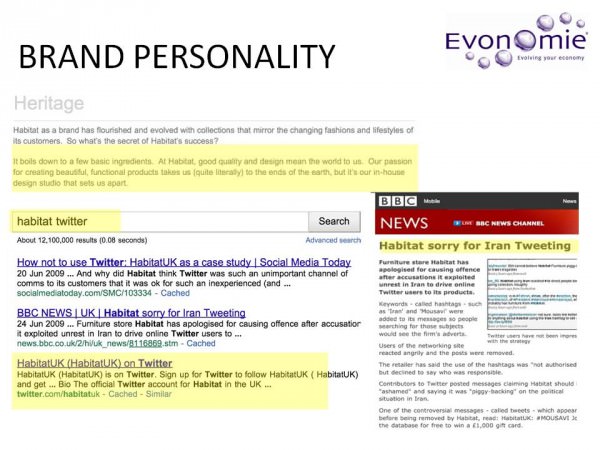
Habitat still hasn’t got it right on Twitter. They are using the site to promote new products as well as answering customer service questions. They would be better off by creating two Twitter accounts: one to manage customer service issues and the second as a promotional tool. At present their main Twitter site is full of words like ‘sorry’, ‘unfortunately’… far too negative.
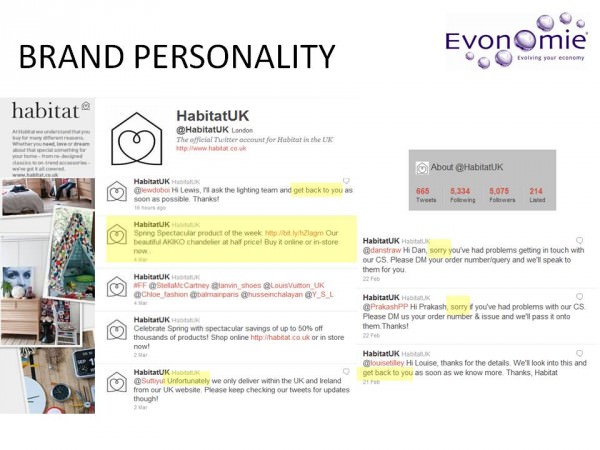
BT (British Telecom) uses a dedicated Twitter account for customer care. This doesn’t mean that it works, but they are starting to integrate the Online Customer Experience and Branding.
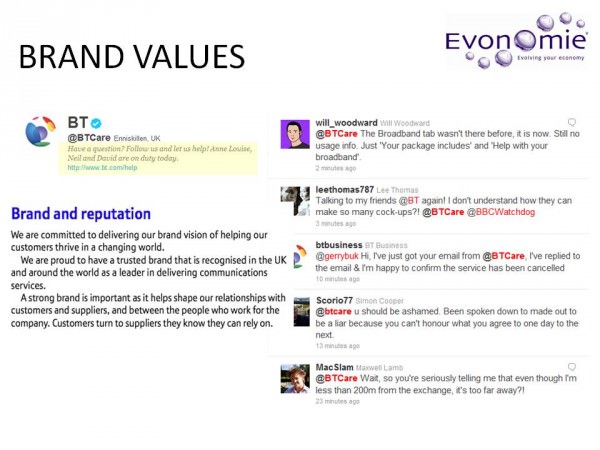
On the business to business side, Only Marketing Jobs is using LinkedIn® well. The business started in 2009 and it has created a group with over 20,000 members. There are specific rules (members must be in the UK and in a marketing role to join) and it has become an engaging and interactive group. It is at the stage where group members are becoming ‘trusted friends’ and are asking for supplier recommendations. They are buying from each other and requesting help.
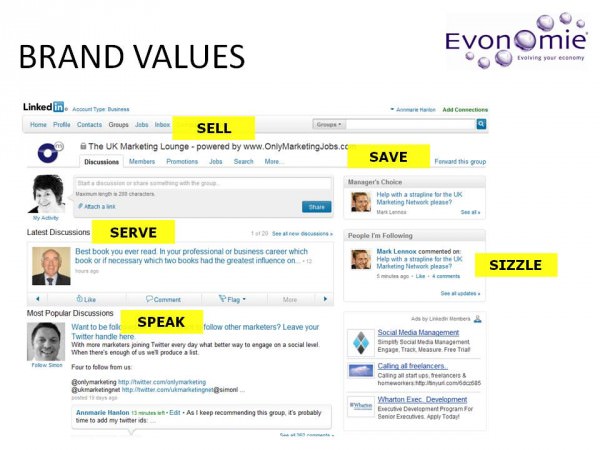
When I spoke to one of the co-directors, Mark Lennox, a while ago, he said the business has a ‘community driver’ and they are actively trying to build community via social media. Their brand’s presence is completely online and integrated. It is also personal. When they send out emails, whether it is to enter awards and request support, or invite people to join the group, their tone has always been personal and they personalise the standard LinkedIn® templates.
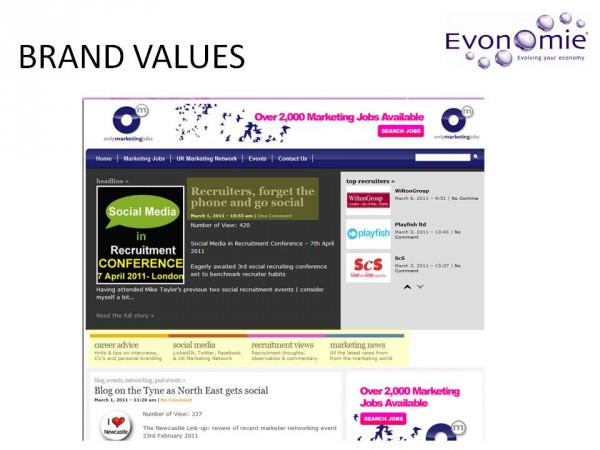
Their commitment to social media is a key element of their brand values which can be seen on their website. They regularly hold ‘tweet-ups’ and have started to segment their social media fans.
Summary for integrating Online Customer Experience and Branding: Integrating the website and social presence
As a summary, here are my tips on approaches to consider.
How do you ensure your company gets it right? Here are my tips on integrating the customer experience and your branding.
1. Monitoring your online image is essential. If something is wrong you have the opportunity to put it right and avoid a negative backlash that can build up.
2. If using social media as a customer service tool, let fans know the rules of engagement, for example if you’re only monitoring Twitter from Monday to Friday in office hours, say so. If you need to have a customer order reference to take any action or help a customer, say so.
3. Ensure brand guidelines are fully integrated online and offline. Provide staff with the information and assets they need to project a consistent brand image.
4. Enable fans to talk about you and use brand assets. Look at ways to provide content for earned media such images, video, key phrases - whatever is relevant for your business.
5. Ensure that your brand captures the relevant social media space. And more importantly, promotes this both online and offline.




















